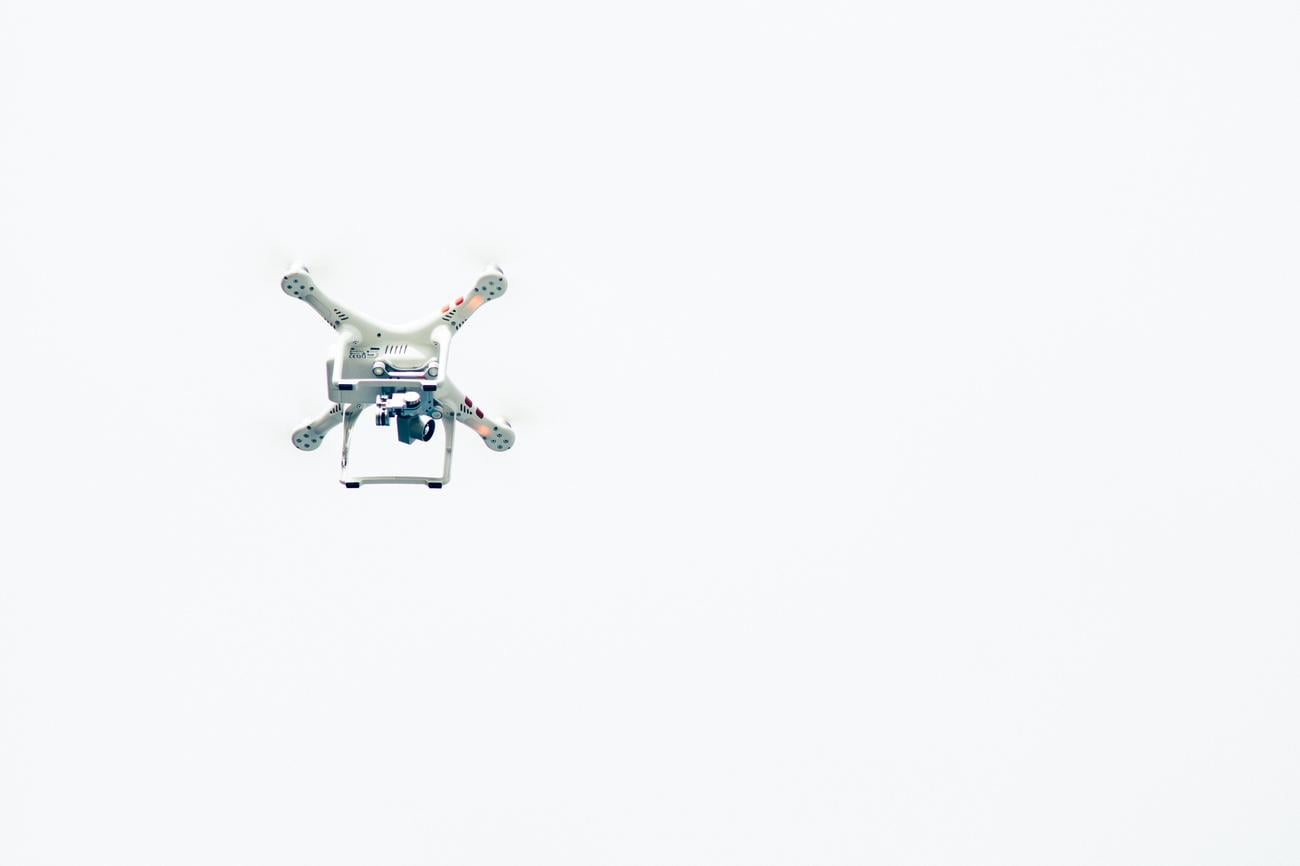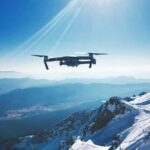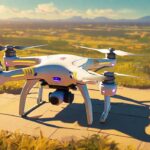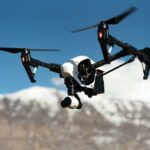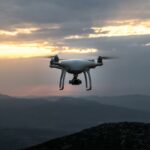In a world where technology is constantly evolving, drones have emerged as one of the most exciting and groundbreaking innovations of our time. With their ability to fly effortlessly through the sky and perform a wide range of tasks, drones have captured the imaginations of people across various industries. As an experienced technology journalist specializing in cutting-edge advancements, I am here to unveil the facts about drones in the future. Buckle up, because we are about to dive into a world of limitless possibilities and discover how drones are set to revolutionize our lives.
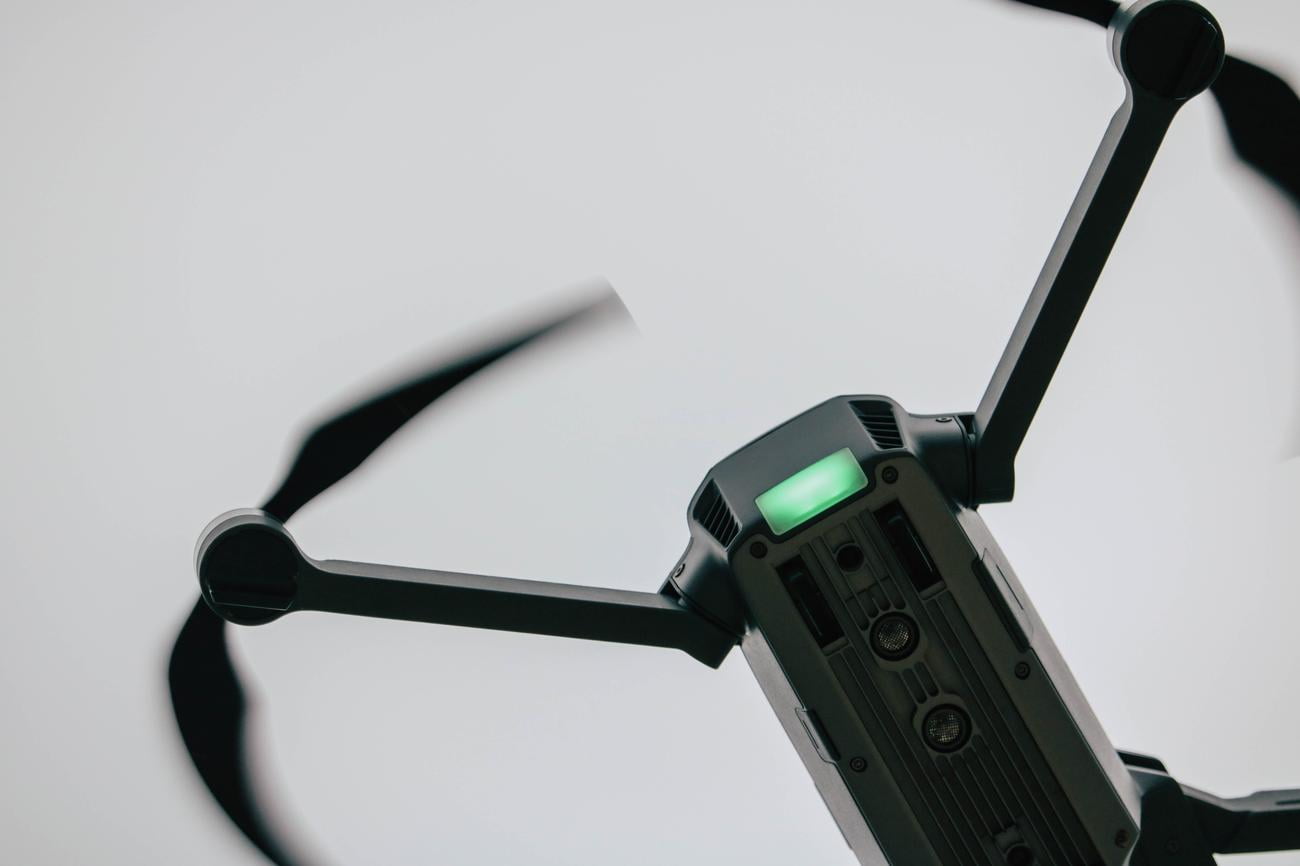
Facts About Drones In The Future
Improvements in Technology for Extended Flight Time and Control Range
Drones have come a long way since their inception, and their potential for the future is limitless. One of the most exciting prospects is the improvement in flight time and control range. As technological advancements continue to soar, drones will be able to stay in the air for longer periods, allowing for enhanced efficiency and productivity. Imagine a drone being able to monitor farmland or survey a construction site without needing frequent battery changes or manual intervention. The possibilities are boundless!
Fact: The future of drones holds great promise with improvements expected in flight time and control range. As technology progresses, drones will be capable of staying in the air for longer durations, amplifying their potential to revolutionize various industries.
Sharper Surveillance Cameras and Enhanced Tracking Technologies
In the future, drones will also undergo significant improvements in their surveillance capabilities. With advancements in camera technology, drones will have the ability to capture crystal-clear images and videos, providing enhanced data for a variety of purposes. From monitoring traffic patterns and wildlife preservation efforts to assisting in search and rescue missions, the potential applications for improved drone cameras are vast. Moreover, tracking technologies will become more advanced, enabling drones to accurately and efficiently navigate through complex environments without the risk of collisions.
Fact: The advent of sharper surveillance cameras and advanced tracking technologies will transform the capabilities of drones in the future. These upgrades will not only enable drones to capture high-quality images and videos but also enhance their navigation abilities, making them indispensable in a wide range of industries.
Integration into Society with New Emerging Uses
As the drone industry continues to evolve, we can expect its integration into society to become even more prominent. The future will bring forth new and exciting uses for drones that we can only imagine today. From delivering packages and monitoring environmental changes to providing aerial transportation and assisting in disaster relief efforts, the possibilities are endless. Drones will play a significant role in shaping the way we live, work, and interact with our environment.
Fact: The future of drones holds immense potential for new emerging uses, leading to their increased integration into society. We can anticipate drones revolutionizing multiple industries and sectors, offering solutions that were previously unimaginable.
Advancements in Military Applications and Artificial Intelligence
In addition to civilian applications, the future of drone technology will witness considerable advancements in military use. With the amalgamation of drones and artificial intelligence, warfare will undergo a paradigm shift. Drones will become more sophisticated and operate autonomously, thereby reducing human risk on the battlefield. The combination of advanced sensor technologies and AI will enhance reconnaissance, surveillance, and even combat capabilities. The future military landscape will heavily rely on drones to gain a strategic advantage.
Fact: The future of drones in warfare is expected to be linked to artificial intelligence, resulting in more advanced and sophisticated military applications. By leveraging autonomous capabilities and cutting-edge sensor technologies, drones will play a vital role in shaping the future of military operations.
Estimated Future Value and Market Size
The potential future value of the drone industry is staggering. Estimates suggest that by 2032, it could reach a whopping $127 billion! This indicates the immense growth potential that lies ahead. Businesses and government entities are already recognizing the value of drones, as evidenced by their combined spending of $13 billion on drones in the past year alone. The global drone market is currently valued at $43 billion, signaling a growing demand for this transformative technology.
Fact: The future of the drone industry holds remarkable potential, with an estimated value of $127 billion by 2032. This underscores the increasing recognition of drones’ value, as demonstrated by the substantial investments being made by businesses and governments worldwide.
Conclusion and Future Prospects
In conclusion, the future of drones is incredibly exciting and ever-evolving. They have already moved beyond mere data-capturing devices, expanding into major transportation vehicles and even carrying people. The applications and uses for commercial, industrial, and military drones are vast and continuously expanding. Drones have also demonstrated their utility during the COVID-19 pandemic, assisting communities in accessing goods and services. As a result, regulators worldwide are actively exploring ways to support and foster the expansion of drone technology.
Fact: The future of drones is marked by endless possibilities and rapid advancements. With their expanding applications and increasing capabilities, drones will undoubtedly shape multiple industries while offering innovative solutions to some of society’s most pressing challenges.
| Key Takeaways |
|---|
| – The future of drones will see improvements in flight time, control range, surveillance cameras, and tracking technologies. |
| – Drones will have sharper surveillance cameras, allowing for enhanced data collection. |
| – Advanced tracking technologies will enable drones to navigate complex environments more accurately. |
| – Drones will become more integrated into society with emerging uses and applications. |
| – Military applications of drones will become more sophisticated, leveraging artificial intelligence for increased capabilities. |
| – The potential future value of drones is estimated to be $127 billion by 2032. |
| – The global drone market is already worth $43 billion. |
| – Drones have proven their worth during the pandemic and are gaining regulatory support for further expansion. |
Drones are becoming increasingly popular in today’s society. They are not only fun to fly but also serve a variety of purposes, both recreational and professional. If you’re interested in learning some fascinating facts about drones, look no further! Click here to discover amazing insights and exciting trivia about these high-tech marvels: facts about drones. Whether you’re a drone enthusiast or simply curious about this cutting-edge technology, this collection of information will surely leave you impressed. So, don’t miss out on the chance to explore the incredible world of drones. Click the link now!
Facts About Drones In The Future
Drones have become an integral part of our ever-evolving technological landscape. They are not only changing the way we view the world but are also transforming several industries. With drone advancements in technology shaping our future, it is crucial to stay informed about the latest developments. Whether it’s for recreational purposes or commercial applications, understanding the future of drones in robotics is essential.
When it comes to emerging drone technologies, there is so much to explore and discover. Companies and individuals are constantly pushing the boundaries of what drones can achieve. From delivery services to aerial photography and surveillance, drones are revolutionizing various industries. These emerging drone technologies have the potential to transform how we live and work.
Click here to delve into the world of drone advancements in technology. Gain insights into the latest innovations and how they can impact our daily lives. Discover the limitless possibilities that drone technology offers, and stay ahead of the curve.
Furthermore, if you are curious about the future of drones in robotics, this is your chance to explore the possibilities. Robotics and drones go hand in hand, and together, they are changing the way we perceive automation. From autonomous drones to collaborative robots, the future holds immense potential. Be at the forefront of this transformation and stay informed about the latest trends and advancements. Click here to dive into the exciting realm of future drone technology.
Don’t miss out on the exciting world of emerging drone technologies. Click here to discover the latest developments and advancements that are shaping the future. Unleash your curiosity and explore how drones are reshaping industries and revolutionizing the way we live. Get a glimpse of the breathtaking possibilities and be prepared for what the future holds.
With the ever-evolving nature of technology, it is crucial to stay informed about the latest drone advancements in technology, future of drones in robotics, and emerging drone technologies. Embrace the future today and click the links below to embark on a thrilling journey into the world of drones.
- Drone advancements in technology: drone advancements in technology
- Future of drones in robotics: future of drones in robotics
- Emerging drone technologies: emerging drone technologies
Drone Delivery: The Failed Promise of the Future
[youtube v=”J-M98KLgaUU”]
In 2013, Jeff Bezos, the CEO of Amazon, introduced the world to the concept of drone delivery—a concept that promised to revolutionize the way we receive packages. Bezos envisioned a future where autonomous drones would swarm the skies, delivering packages to our front yards within 30 minutes of ordering. The idea seemed far-fetched, yet exciting and full of potential. It ignited debates and grabbed headlines, with many believing that the era of drone delivery was just around the corner.
Fast forward to 2022, and the reality of drone delivery falls far short of those initial grand visions. For the majority of people, automated drones are not dropping off small packages or food orders from the sky. Instead, deliveries are being made by high schoolers and gig workers. The promised 30-minute delivery time frame is rare, if not non-existent. What went so wrong with drone delivery?
One contributing factor is the complex web of legal, technological, and practical constraints that drone delivery companies face. First and foremost, there are airspace restrictions imposed by the Federal Aviation Administration (FAA). In cities like Phoenix, where the sunny and dry climate seems ideal for drone delivery, there are restricted areas around airports and military bases that pose significant challenges for operating drones.
Moreover, the public’s initial air of distrust towards this novel technology has fueled the need for perfection in drone delivery operations. Any high-profile accidents or incidents involving delivery drones could trigger a media firestorm and lead to legislative restrictions. The need for autonomous operations and computer vision technologies capable of safely identifying landing zones and avoiding obstacles adds another layer of complexity to achieving perfection.
While companies like Zipline and Matternet have developed solutions for safely delivering packages from drones, they often require controlled areas free from obstructions. This poses a problem when it comes to delivering to multi-family homes and apartment buildings, where private yards are not guaranteed. These challenges significantly narrow the scope of feasible drone delivery operations.
When considering the potential customer base for drone delivery, the numbers dwindle even further. In a city like Phoenix, extrapolating from city-wide data, there may be only around 180,820 potential users with single-family homes and suitable delivery areas. This showcases the dwindling impact of drone delivery, reducing it to a niche service for a fortunate few in selected areas.
Additionally, consumer preferences and established alternatives have shaped the landscape of delivery services. While drones were initially seen as a novelty, consumers have realized that speed and efficiency matter more than the method of delivery. The rise of food delivery apps like UberEats, Grubhub, and Doordash demonstrates that low-tech solutions can effectively meet consumer needs without the complexities and restrictions faced by drone delivery companies.
These food delivery apps have tripled in size since 2017, offering speedy delivery and undercutting the potential advantages of drone delivery. They have already expanded into grocery and goods delivery, further solidifying their position in the market. From the consumer perspective, the problem drone delivery aimed to solve has already been addressed by these established alternatives.
Automation and technological advances offer another potential solution for last-mile delivery. Ground-based autonomous and semi-autonomous robotics have emerged as competitors to drones, partnering with food delivery apps to expand their reach. While these technologies also face their own challenges, they are likely to encounter fewer hurdles than drone delivery.
In conclusion, the failure of drone delivery to become the future of delivery can be attributed to a range of factors, including legal restrictions, technological complexities, limited delivery zones, and the rapid growth of low-tech alternatives. The initial promise of drones revolutionizing delivery has given way to the reality that consumer preferences and existing solutions have already solved the problem. It remains to be seen if drone delivery will ever fulfill its potential, but for now, it seems to have fallen short of expectations.
FAQ
Question 1
What advancements can we expect in the future of drones?
Answer 1
In the future, drones are expected to bring improvements in flight time, control range, surveillance cameras, and tracking technologies. As technology improves, drones will be able to stay in the air longer, be controlled over long distances, and have sharper surveillance cameras and tracking technologies.
Question 2
How is drone technology evolving and becoming more integrated into society?
Answer 2
The future of drone technology is expansive and continuously evolving. It is expected to become more integrated into society as new uses for it arise. Drones have rapidly evolved beyond capturing data into major transportation vehicles and carrying people. Their uses and applications for commercial, industrial, and military purposes are varied and continuously growing.
Question 3
What is the estimated future value of drones in various sectors?
Answer 3
The potential future value of drones in various sectors is estimated to be around $127 billion by 2032. Businesses and the government spent a combined total of $13 billion on drones in the past year. The global drone market is currently worth $43 billion as of 2022.
Question 4
What significant role do drones play in warfare?
Answer 4
The use of drones in warfare is expected to become more sophisticated and linked to artificial intelligence. Drones are increasingly being used for surveillance, reconnaissance, and targeted strikes. Their ability to operate in dangerous environments and gather intelligence makes them valuable assets in modern warfare.
Question 5
How have drones been utilized during the COVID-19 pandemic?
Answer 5
Drones have played a crucial role in helping communities access goods and services during the pandemic. They have been used for contactless deliveries, remote monitoring, and disinfection efforts. This has led to regulators worldwide looking for ways to support the expansion of drone technology to further aid in future crises.
The Future of Drones: Revealing Fascinating Facts
Are you curious about the future of drones and the incredible possibilities they hold? Look no further, as this article dives into the fascinating world of drone technology and uncovers some mind-blowing facts that will leave you in awe. As an experienced technology journalist, I have extensively researched and analyzed the advancements in this field, and I am excited to share with you all the incredible potential and ethical considerations surrounding drones. So, fasten your seatbelts and get ready to explore the future of drones and the astonishing facts that await!
Facts About Drones in the Future
The future of drone technology is teeming with possibilities, and we can expect some fascinating advancements in the years to come. From longer flight times to enhanced surveillance capabilities, drones are set to revolutionize the way we interact with the world. Let’s dive into some exciting facts about drones in the future.
Extended Flight Times
One of the most significant improvements we can expect in future drones is enhanced flight time. Imagine a drone that can stay in the air for hours, capturing breathtaking aerial footage or conducting search and rescue operations without needing frequent battery changes. Thanks to advancements in battery technology, future drones will enjoy extended flight times, making them even more versatile and efficient. This means that drone pilots and professionals can accomplish their tasks without constant interruptions, saving time and maximizing productivity.
“With extended flight times, drones will unlock a whole new world of possibilities, allowing us to explore and capture the beauty of our surroundings like never before.”
Increased Control Range
While current drones can be controlled over certain distances, the future holds even greater possibilities in terms of their control range. Future drones are expected to have improved control systems, enabling pilots to operate them over much larger distances. This means that a drone pilot may be able to control a drone from miles away, opening up new avenues for exploration, surveillance, and aerial monitoring. With an increased control range, drones can reach remote areas, gather vital data, or perform critical tasks with ease and efficiency.
“The ability to control drones over large distances will redefine what we can achieve with these remarkable devices, pushing boundaries and revolutionizing various industries.”
Advanced Surveillance Cameras
Drones have already revolutionized aerial photography and videography, allowing us to capture stunning images from unique perspectives. In the future, surveillance cameras on drones are set to become even more powerful and precise. Expect drones with sharper surveillance cameras that can capture detailed images and videos in high resolution. This advancement will prove invaluable in various fields, including law enforcement, security, and disaster response. Drones equipped with advanced surveillance cameras could provide real-time situational awareness and aid in making critical decisions.
“With more advanced surveillance cameras, drones will become the ultimate eye in the sky, offering unparalleled capabilities to gather intelligence and monitor situations from above.”
Cutting-Edge Tracking Technologies
Tracking technologies are evolving at a rapid pace, and drones are poised to take full advantage of these advancements. In the future, drones will feature cutting-edge tracking technologies that can precisely locate and monitor objects or individuals. Whether it’s tracking wildlife for conservation efforts, monitoring traffic patterns for urban planning, or assisting in search and rescue missions, these tracking capabilities will augment the drone’s potential uses significantly. Such advancements in tracking will enable drones to provide timely and accurate information to assist in various domains.
“With cutting-edge tracking technologies, drones will become invaluable tools in tracking and monitoring tasks, providing vital information to help solve intricate challenges.”
With each passing day, the future of drones becomes more awe-inspiring. From extended flight times and increased control range to sharper surveillance cameras and advanced tracking technologies, there’s no doubt that drones will play an integral role in our rapidly evolving world. As society discovers new applications for these versatile machines, we can look forward to a future where drones work alongside us, unlocking endless possibilities and reshaping the way we experience the world.
[Note: This article is a concise exploration of the potential advancements and ethical considerations surrounding drone technology in the future.]
Drones, also known as unmanned aerial vehicles (UAVs), have revolutionized the way we view and interact with the world. These fascinating devices offer an incredible array of applications, from aerial photography and videography to search and rescue missions. If you’re curious to learn more about the amazing capabilities and features of drones, click here for some mind-blowing facts about drones: facts about drones. Prepare to be amazed as you delve into the world of these cutting-edge technologies that are shaping the future.
Facts about Drones in the Future
Drones have revolutionized various sectors, and their future looks incredibly promising. If you’re curious about the future of drone technology, you need to check out our article on the “Future of Drone Technology.” This insightful piece provides valuable information about the latest advancements and their potential impact. Prepare to be amazed by the innovations in the drone industry by exploring our article on “Innovations in Drone Industry.” Uncover groundbreaking developments that are reshaping the way drones are utilized and discover the endless possibilities they bring. Furthermore, if you want to dive into the exciting world of emerging drone applications, click on our piece about “Emerging Drone Applications.” Witness how drones are being utilized in unimaginable ways and explore the countless opportunities they present. Get ready to be inspired and captivated by the incredible future that awaits in the drone industry.
To learn more about the future of drone technology, visit: Future of Drone Technology
For insights into innovations in the drone industry, click here: Innovations in Drone Industry
Discover the fascinating world of emerging drone applications: Emerging Drone Applications
FAQ
Question: What improvements can we expect in future drones?
Answer: Future drones are expected to have improvements in flight time, control range, surveillance cameras, and tracking technologies. As technology improves, drones will be able to stay in the air longer, be controlled over long distances, and have sharper surveillance cameras and tracking technologies.
Question: How is the future of drone technology evolving?
Answer: The future of drone technology is expansive and continuously evolving. Drones are expected to become more integrated into society as new uses for them arise. They have the potential to revolutionize industries such as delivery services, agriculture, and infrastructure inspection.
Question: What are some potential ethical considerations surrounding drone technology?
Answer: As drones become more advanced and widely used, there are several ethical considerations that need to be addressed. Privacy concerns arise as drones have the ability to capture high-resolution imagery and collect personal data. Additionally, questions about their use in warfare and the potential for autonomous decision-making pose ethical dilemmas that society must navigate.
Question: Can future drones be linked to artificial intelligence?
Answer: Yes, the use of drones in warfare is expected to become more sophisticated and linked to artificial intelligence. The integration of AI can enhance their capabilities, allowing for autonomous decision-making during missions. However, concerns regarding the ethical implications of autonomous drones must be carefully examined.
Question: How will future drones impact various industries?
Answer: Future drones have the potential to revolutionize various industries. In agriculture, drones can assist in crop monitoring and spraying, improving efficiency and reducing costs. Delivery services can benefit from the use of drones for faster and more cost-effective deliveries. Additionally, drones can be used for infrastructure inspection, providing a safer and more efficient alternative to manual inspections.
- Unlocking 2-Letter Words with U: The Definitive Guide - April 4, 2025
- Unlock Words with the Letters THREE: Top Unscramble Tools 2025 - April 4, 2025
- Master Scrabble: X & Z Words for High Scores - April 4, 2025
